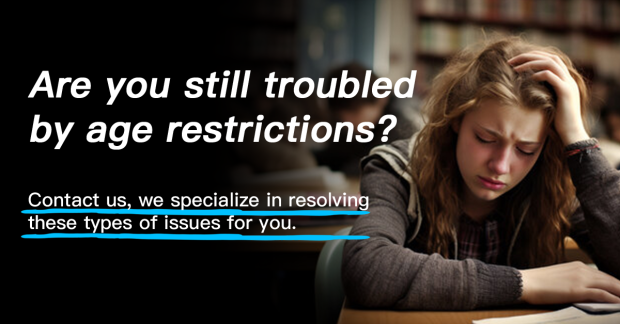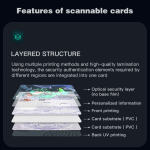Understanding Real ID: A Foundation for Secure Identification
Real ID, established under the 2005 REAL ID Act, represents a federal standard for state-issued driver’s licenses and identification cards. Its primary aim is to enhance security by setting uniform criteria for how states issue and verify these credentials. By 2025, a Real ID-compliant card will be required to access federal facilities, board domestic flights, or enter nuclear power plants, making it a critical tool in national identity management.
To obtain a Real ID, applicants must provide documentation proving identity, date of birth, social security number, and residential address. Examples include a U.S. passport, birth certificate, or permanent resident card. States are tasked with validating these documents against trusted sources, ensuring that each issued Real ID meets strict anti-fraud guidelines. This process creates a baseline of trust in government-issued IDs, which extends beyond individual use to support broader systems of verification.
Professional Licensing Boards: Guardians of Competency and Identity
Professional licensing boards operate at the state level, overseeing the certification of individuals in regulated professions such as medicine, law, engineering, and cosmetology. Their mandate includes evaluating qualifications, administering exams, and enforcing ethical standards. Less visible but equally vital is their role in verifying the identity of license applicants.

For many professions, a valid license serves as both proof of expertise and a form of official identification. Licensing boards are responsible for confirming that applicants are who they claim to be, often cross-referencing information with other state or federal databases. This dual focus—competency and identity—positions these boards as key players in maintaining public trust. A licensed professional’s credentials, when verified by their board, carry weight in legal, financial, and service-oriented contexts.
The Intersection: How Real ID and Licensing Boards Strengthen Verification
The collaboration between Real ID and professional licensing boards creates a layered verification system. When an individual applies for a professional license, the board may require a Real ID as part of the identity check. This ensures that the person seeking licensure is not only qualified but also verifiably who they represent themselves to be.
Conversely, Real ID verification can draw on data from licensing boards. For example, if an applicant provides a professional license as secondary identification, the state’s Real ID office may contact the relevant board to confirm the license’s validity. This cross-checking reduces the risk of identity fraud, as it leverages the specialized knowledge and records maintained by licensing boards.

Another key synergy lies in document validation. Licensing boards often handle sensitive documents like academic transcripts, employment records, or prior license histories. By integrating these records with Real ID requirements, states can create a more comprehensive picture of an individual’s identity and background. This integration is particularly valuable for professionals who move between states, as it streamlines the verification process across jurisdictions.
Challenges in Coordinated Verification
Despite their complementary roles, Real ID and licensing boards face challenges in aligning their processes. Variations in state-specific requirements for both Real IDs and professional licenses can create inconsistencies. For instance, one state may accept a notarized affidavit as proof of residency for a Real ID, while another requires a utility bill. Similarly, licensing boards in different states might request different forms of identity documentation, complicating cross-state verification.
Technology also plays a role. While many licensing boards have digital systems for managing licenses, not all are integrated with state DMV databases (where Real IDs are issued). This lack of interoperability can lead to delays in verification, especially when manual checks are required. Additionally, protecting the privacy of personal information shared between these entities is a constant concern, requiring robust cybersecurity measures to prevent data breaches.
Common Problems and Solutions in Real ID and Licensing Board Verification
-
Problem: Difficulty Providing Original Documents for Real ID
Many applicants struggle to produce original birth certificates, passports, or social security cards, especially if these documents were lost or destroyed. This can stall the Real ID application process, which typically requires original (not photocopied) documents.
Solution: Most states allow certified copies of vital records (e.g., a birth certificate with a state seal) as acceptable substitutes. For social security verification, applicants can request a replacement card from the SSA or use a W-2 form that includes their full SSN. Licensing boards may also assist by verifying academic or professional records that include identity details, which can supplement Real ID documentation.
-
Problem: Delays in License Verification by Boards
Professionals applying for a Real ID may need their current license verified by their state’s licensing board. If the board’s verification process is slow—due to high demand or understaffing—this can delay the Real ID application.
Solution: Many licensing boards now offer online verification portals where third parties (including DMV offices) can check license status in real time. Applicants should confirm their board’s preferred method of verification (e.g., online, fax, or mail) and submit requests well in advance of their Real ID appointment.
-
Problem: Expired or Lapsed Professional Licenses
An expired license may not be accepted as valid identification during Real ID verification, even if the individual is in the process of renewing it. This can create a circular issue: the Real ID is needed for license renewal, but the expired license is needed for Real ID verification.
Solution: Licensing boards often issue temporary or provisional renewals for individuals in this situation. Applicants should contact their board to request a letter confirming their renewal status, which can be presented to the DMV as proof of active licensure.
-
Problem: Remote Verification for Out-of-State Applicants
Professionals relocating to a new state may need both a Real ID and a new professional license. Verifying identity and licensure across state lines can be complicated, especially if the new state’s requirements differ from the previous one.
Solution: The National Association of State Directors of Nursing (NASBN) and similar interstate compact organizations for other professions streamline license transfers. For Real ID, the new state’s DMV may accept documents verified by the previous state’s licensing board, provided they meet federal standards. Applicants should research reciprocity agreements between states to simplify the process.
-
Problem: Discrepancies in Name or Date of Birth Across Documents
Discrepancies (e.g., a maiden name vs. married name, or a typo in a birth year) between a Real ID application and professional license can trigger additional scrutiny, delaying approval.
Solution: Legal documents like marriage certificates, divorce decrees, or court-ordered name changes can be used to explain name discrepancies. For date of birth errors, a certified birth certificate or passport (as the primary document) will override minor typos in secondary documents. Licensing boards can also issue letters confirming the correct details on file, which can be submitted to the DMV.



